 W
WSilk is a natural protein fiber, some forms of which can be woven into textiles. The protein fiber of silk is composed mainly of fibroin and is produced by certain insect larvae to form cocoons. The best-known silk is obtained from the cocoons of the larvae of the mulberry silkworm Bombyx mori reared in captivity (sericulture). The shimmering appearance of silk is due to the triangular prism-like structure of the silk fibre, which allows silk cloth to refract incoming light at different angles, thus producing different colors.
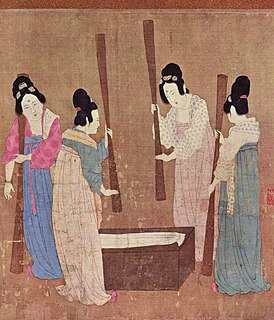 W
WThe production of silk originated in China in the Neolithic period. Silk production remained confined to China until the Silk Road opened at some point during the later half of the 1st millennium BC, though China maintained its virtual monopoly over silk production for another thousand years.
 W
WArtisans Angkor is a Cambodian social business creating job opportunities for young people in rural areas, while reviving traditional Khmer craftsmanship.
 W
WArtificial silk or art silk is any synthetic fiber which resembles silk, but typically costs less to produce. Frequently, "artificial silk" is just a synonym for rayon. When made out of bamboo viscose it is also sometimes called bamboo silk.
 W
WEtles or Etles Silk is a type of Ikat that Uyghurs used traditionally for woman's clothing, however, more and more Uyghur fashion designers are introducing Etles to Men's clothing. Nowadays, Etles's unique pattern is no longer limited to application in clothing, it can be easily found in home decoration and accessories. It is a kind of silk produced by the atlas moth. One of the largest production sites is the city of Hotan and surrounding towns in the Uyghur homeland.
 W
WAttacus atlas, the Atlas moth, is a large saturniid moth endemic to the forests of Asia. The species was first described by Carl Linnaeus in his 1758 10th edition of Systema Naturae.
 W
WBizarre silks are a style of figured silk fabrics popular in Europe in the late 17th and early 18th centuries. Bizarre silks are characterized by large-scale, asymmetrical patterns featuring geometrical shapes and stylized leaves and flowers, influenced by a wave of Asian textiles and decorative objects reaching the European market in these decades. Bizarre silks were used for both clothing and furnishings. As a description, the term was first used by Dr. Vilhelm Sloman in the title of a book, Bizarre Designs in Silks published in 1953 in Copenhagen.
 W
WBlonde lace is a continuous bobbin lace from France that is made of silk. The term blonde refers to the natural color of the silk thread. Originally this lace was made with the natural-colored silk, and later in black. Most blonde lace was also made in black. It was made in the 18th and 19th centuries. The pattern, which is generally of flowers, is made with a soft silk thread, thicker than the thread used for the ground. This causes a big contrast between the flowers and the ground. It uses the same stitches as Chantilly lace and Lille lace, and is similarly made in strips 5 inches wide and invisibly joined. Blonde lace is not as good as Chantilly lace though, as the ground isn't as firm, nor is the pattern as regular.
 W
WBombyx mori, the domestic silk moth, is an insect from the moth family Bombycidae. It is the closest relative of Bombyx mandarina, the wild silk moth. The silkworm is the larva or caterpillar of a silk moth. It is an economically important insect, being a primary producer of silk. A silkworm's preferred food are white mulberry leaves, though they may eat other mulberry species and even the osage orange. Domestic silk moths are closely dependent on humans for reproduction, as a result of millennia of selective breeding. Wild silk moths are different from their domestic cousins as they have not been selectively bred; they are thus not as commercially viable in the production of silk.
 W
WByzantine silk is silk woven in the Byzantine Empire (Byzantium) from about the fourth century until the Fall of Constantinople in 1453.
 W
WCoa vestis is an ancient type of fabric named after its point of origin, the Greek island Kos.
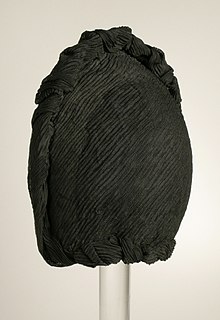 W
WCrêpe, also spelt crepe or crape, is a silk, wool, or synthetic fiber fabric with a distinctively crisp, crimped appearance. The term crape typically refers to a form of the fabric associated specifically with mourning. Crêpe is also historically called crespe or crisp.
 W
WCricula trifenestrata, the cricula silkmoth, is a species of wild silk moth of the family Saturniidae. It is found from India to the Philippines, Sulawesi, Java, and Sri Lanka.
 W
WDragon silk is a material created by Kraig Biocraft Laboratories of Ann Arbor, Michigan from genetically modified silkworms to create body armor. Dragon silk combines the elasticity and strength of spider silk. It has the tensile strength as high as 1.79 gigapascals and the elasticity above 38% exceeding the maximum reported features of the spider silk. It is reported that dragon silk is more flexible than the Monster silk and stronger than the "Big Red, recombinant spider silk designed for increased strength.
 W
WDupioni is a plain weave crisp type of silk fabric, produced by using fine thread in the warp and uneven thread reeled from two or more entangled cocoons in the weft. This creates tightly-woven yardage with a highly-lustrous surface. It is similar to shantung, but slightly thicker, heavier, and with a greater slub count.
 W
WEri silk comes from the caterpillar of Samia ricini, found in northeast India and some parts of China, Japan. It was imported to Thailand in 1974. The name "eri" is derived from the Assamese word "era", which means "castor", as the silkworm feeds on castor plants. Another type of eri silk is "Ailanthus silk moth", refers to the host plant, Borkesseu, Ailanthus excelsa, practiced in China. Eri silk is also known as endi or errandi in India. The woolly white silk is often referred to as the fabric of peace when it is processed without killing the silkworm. This process results in a silk called Ahimsa silk. Moths leave the cocoon and then the cocoons are harvested to be spun. The eri silkworm is the only completely domesticated silkworm other than Bombyx mori.
 W
WThe Fairy Flag is an heirloom of the chiefs of Clan MacLeod. It is held in Dunvegan Castle along with other notable heirlooms, such as the Dunvegan Cup and Sir Rory Mor's Horn. The Fairy Flag is known for the numerous traditions of celtic fairies, and magical properties associated with it. The flag is made of silk, is yellow or brown in colour, and is a square of side about 18 inches. It has been examined numerous times in the last two centuries, and its condition has somewhat deteriorated. It is ripped and tattered, and is considered to be extremely fragile. The flag is covered in small red "elf dots". In the early part of the 19th century, the flag was also marked with small crosses, but these have since disappeared. The silk of the flag has been stated to have originated in the Far East, and was therefore extremely precious, which led some to believe that the flag may have been an important relic of some sort. Others have attempted to associate the flag with the Crusades or even a raven banner, which was said to have been used by various Viking leaders in the British Isles.
 W
WA foulard is a lightweight fabric, either twill or plain-woven, made of silk or a mix of silk and cotton. Foulards usually have a small printed design of various colors. Foulard can also refer by metonymy to articles of clothing, such as scarves and neckties, made from this fabric. In men's ties, foulard refers to the pattern rather than the material; it is a small-scale pattern with basic block repeat, also called a set pattern or a tailored pattern.
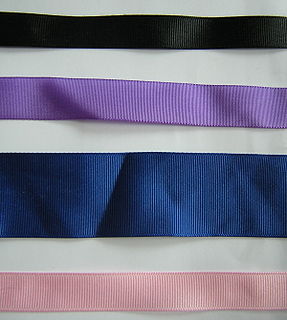 W
WGrosgrain, is a type of fabric or ribbon defined by the fact that its weft is heavier than its warp, creating prominent transverse ribs. It is called a "corded" fabric since the weft resembles a fine cord. Grosgrain is a plain weave corded fabric, with heavier cords than in poplin but lighter than in faille. Grosgrain has a very dull appearance with little luster but is very strong. It is a firm, close-woven, fine-corded fabric. Grosgrain fabric is most commonly available in black, but grosgrain ribbon comes in a large variety of colors and patterns. The ribbon is very similar to Petersham ribbon in its appearance, but it does not have the ability to follow the curves of a surface or edge the way that the latter does.
 W
WThe Gunthertuch is a Byzantine silk tapestry which represents the triumphal return of a Byzantine Emperor from a victorious campaign. The piece was purchased, or possibly received as a gift, by Gunther von Bamberg, Bishop of Bamberg, during his 1064–65 pilgrimage to the Holy Land. Gunther died on his return journey, and was buried with it in the Bamberg Cathedral. The fabric was rediscovered in 1830, and is now exhibited in the Bamberg Diocesan Museum.
 W
WHabutai is one of the most basic plain weaves of silk fabric. While it was traditionally woven in Japan, most habutai is today woven in China. It is normally a lining silk but can also be used for T-shirts, lampshades, summer blouses or very light lingerie. It is quite easy to dye and can be found in many stores.
 W
WJapanese silk is silk harvested in the country of Japan. The silk industry there was predominant from the 1930s to 1950s, but is less common now.
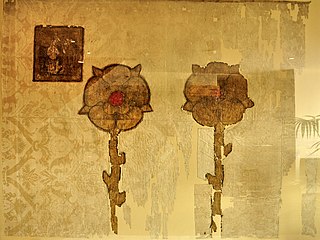 W
WThe Juliusbanner are elaborate silk banners given to the cantons and other entities of the Old Swiss Confederacy by Pope Julius II in 1512, in recognition of the support he received from Swiss mercenaries against France in the Pavia campaign.
 W
WLao silk is produced in Laos with ancient weaving techniques that produce high quality silk. This woven cloth has traditionally been used for a wide range of purposes, including religious, ritual, and everyday uses. It is used for garments and home decorations by both upper class and rural individuals. Traditional patterns use bold color combinations, such as red and yellow.
 W
WThe Llotja de la Seda is a late Valencian Gothic-style civil building in Valencia, Spain. It is a principal tourist attraction in the city.
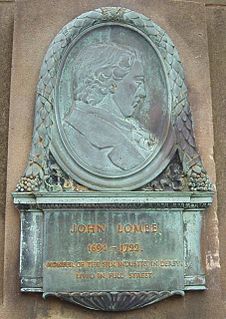 W
WJohn Lombe was a silk spinner in the 18th century Derby, England.
 W
WThe Manchester Silkworms were a collegiate summer baseball team located in Manchester, Connecticut playing in the New England Collegiate Baseball League, a collegiate summer baseball league operating in the northeastern United States region of New England. The team, an expansion franchise formed in 1999 which began play for the 2000 season, was based out of Northwest Park. In October, 2009 a new ownership group announced they would be moving the team to Laconia, New Hampshire, becoming the Laconia Muskrats.
 W
WThe seal of the town of Manchester in Connecticut consists of a Mulberry tree with "Town of Manchester Connecticut Seal" engulfing it. There is also the year of incorporation, 1823, fashioned out of a silk thread, all of which is on to a yellow background.
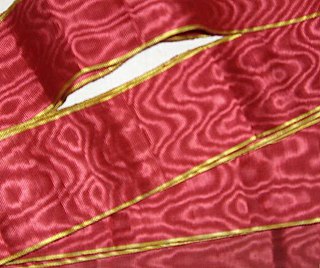 W
WMoire, less often moiré, is a textile with a wavy (watered) appearance produced mainly from silk, but also wool, cotton and rayon. The watered appearance is usually created by the finishing technique called calendering. Moire effects are also achieved by certain weaves, such as varying the tension in the warp and weft of the weave. Silk treated in this way is sometimes called watered silk.
 W
WPachypasa otus is a moth of the family Lasiocampidae first described by Dru Drury in 1773. It is found in southern Europe, Asia Minor, Armenia, Iraq, Iran and Israel.
 W
WPaduasoy or padesoy is a luxurious strong corded or grosgrain silk textile that originated in Early Modern Europe. The term paduasoy first appeared in English in 1663.
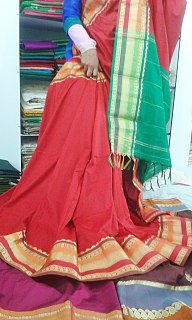 W
WRajshahi silk is the name given to the silk products produced in Rajshahi, Bangladesh. It is famous because it is a high quality fabric used for clothing, especially for saris.
 W
WNoil is the short fiber left over from combing wool or spinning silk and used as a decorative additive for many spinning projects like rovings and yarns. Silk noil is also called "raw silk", although that is a misnomer. As noil is a relatively short fiber, fabric made from noil is weaker and considered less valuable.
 W
WRayon is a regenerated cellulose fiber that is made from natural sources of cellulose, such as wood and related agricultural products. It has the same molecular structure as cellulose. Viscose can mean:A viscous solution of cellulose A synonym of rayon A specific term for viscose rayon — rayon made using the viscose process
 W
WSamite was a luxurious and heavy silk fabric worn in the Middle Ages, of a twill-type weave, often including gold or silver thread. The word was derived from Old French samit, from medieval Latin samitum, examitum deriving from the Byzantine Greek ἑξάμιτον hexamiton "six threads", usually interpreted as indicating the use of six yarns in the warp. Samite is still used in ecclesiastical robes, vestments, ornamental fabrics, and interior decoration.
 W
WSan Leucio is a frazione of the comune of Caserta, in the region of Campania in southern Italy. It is most notable for a resort developed around an old silk factory, included in the UNESCO World Heritage sites list in 1997.
 W
WSea silk is an extremely fine, rare, and valuable fabric that is made from the long silky filaments or byssus secreted by a gland in the foot of pen shells. The byssus is used by the clam to attach itself to the sea bed.
 W
WSericulture, or silk farming, is the cultivation of silkworms to produce silk. Although there are several commercial species of silkworms, Bombyx mori is the most widely used and intensively studied silkworm. Silk was believed to have first been produced in China as early as the Neolithic Period. Sericulture has become an important cottage industry in countries such as Brazil, China, France, India, Italy, Japan, Korea, and Russia. Today, China and India are the two main producers, with more than 60% of the world's annual production.
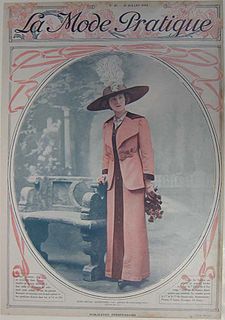 W
WShantung is a type of silk plain weave fabric historically from the province of Shandong. It is similar to Dupioni, but is slightly thinner and less irregular. Shantung is often used for bridal gowns.
 W
WSilk in the Indian subcontinent is a luxury good. In India, about 97% of the raw mulberry silk is produced in the five Indian states of Karnataka, Andhra Pradesh, Tamil Nadu, West Bengal and Gujarat. Mysore and North Bangalore, the upcoming site of a US$20 million "Silk City", contribute to a majority of silk production. Another emerging silk producer is Tamil Nadu where mulberry cultivation is concentrated in Salem, Erode and Dharmapuri districts. Hyderabad, Andhra Pradesh and Gobichettipalayam, Tamil Nadu were the first locations to have automated silk reeling units.
 W
WChina is the world's largest silk producer. The vast majority of Chinese silk originates from the mulberry silkworms. During the larval stage of its life-cycle, the insects feeds on the leaves of mulberry trees. Non-mulberry silkworms cocoon production in China primarily focuses on wild silk from the Chinese Tussah moth. This moth typically feeds on trees and its larvae spin coarser, flatter, yellower filament than the mulberry silk moths.
 W
WThe Silk Road was a network of trade routes which connected the East and West, and was central to the economic, cultural, political, and religious interactions between these regions from the 2nd century BCE to the 18th century. The Silk Road primarily refers to the land routes connecting East Asia and Southeast Asia with South Asia, Persia, the Arabian Peninsula, East Africa and Southern Europe.
 W
WSilkhenge structures are a means of spider reproduction used by one or more currently-unknown species of spider. It typically consists of a central "spire" constructed of spider silk, containing one to two eggs, surrounded by a sort of fence of silk in a circle.
 W
WBombyx mori, the domestic silk moth, is an insect from the moth family Bombycidae. It is the closest relative of Bombyx mandarina, the wild silk moth. The silkworm is the larva or caterpillar of a silk moth. It is an economically important insect, being a primary producer of silk. A silkworm's preferred food are white mulberry leaves, though they may eat other mulberry species and even the osage orange. Domestic silk moths are closely dependent on humans for reproduction, as a result of millennia of selective breeding. Wild silk moths are different from their domestic cousins as they have not been selectively bred; they are thus not as commercially viable in the production of silk.
 W
WSpider silk is a protein fibre spun by spiders. Spiders use their silk to make webs or other structures, which function as sticky nets to catch other animals, or as nests or cocoons to protect their offspring, or to wrap up prey. They can also use their silk to suspend themselves, to float through the air, or to glide away from predators. Most spiders vary the thickness and stickiness of their silk for different uses.
 W
WThai silk is produced from the cocoons of Thai silkworms. Thailand's silkworm farmers cultivate both types of the domesticated silkworms that produce commercial silk: Samia ricini, commonly known as the eri silkworm, which produces matte eri silk, and the Bombyx mori, producer of the better known, glossy mulberry silk. The latter is by far the larger silk producer of the two.
 W
WTussar silk is produced from larvae of several species of silkworms belonging to the moth genus Antheraea, including A. assamensis, A. mylitta, A. paphia, A. pernyi, A. roylei and A. yamamai. These silkworms live in the wild forests in trees belonging to Terminalia species and Shorea robusta as well as other food plants like jamun and oak found in South Asia, eating the leaves of the trees they live on. Tussar silk is valued for its rich texture and natural deep gold colour, and varieties are produced in many countries, including China, India, Japan, and Sri Lanka.
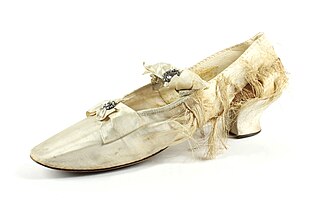 W
WWeighted silk is silk which has been treated to restore or increase the weight lost during the process of degumming. This processing started in the 19th century with vegetable-based solutions such as tannins or sugar. Chemical solutions based upon salts of lead or tin were then used, as well as silicate, phosphate of soda, and astringent extracts. These increased the weight considerably but led to accusations of adulteration as the properties of the silk were impaired.
 W
WYokohama Silk Museum is a museum located in Naka-ku, Yokohama, Japan that covers the silk trade in Japan. The museum displays silk kimonos and covers the importance of Yokohama as a silk port.